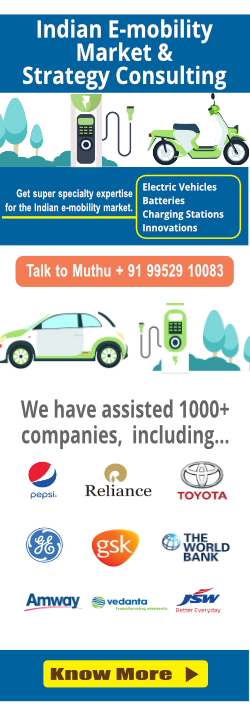(Image courtesy: Wired)
I was reading a well researched news item on Business Standard titled “Electric vehicles likely to remain niche segment in near future“.
What I liked about this news item was that, going beyond just saying what stops EVs from growing, it had presented three scenarios each with a different market share for EVs by 2030 – 4%, 9% and 16%. It had also further outlined the factors needed in order to reach the higher market share scenarios.
The report certainly was thought-provoking, and I felt I can use my team’s data and analyses in the past three years to further build on what the author had done in the news report, specifically trying to arrive at a set of drivers that can get EV market share to even beyond 20% by 2030.
While the report had not explicitly mentioned it so, I think this was written predominantly with electric cars in mind.
I think it will be a worthwhile exercise to consider what happens when different drivers happen differently across years, to the growth of different types of electric vehicles.
Drivers
Let’s first look at drivers that can accelerate EV adoption.
A range of drivers exist (and many of them are also being employed) to accelerate EV adoption. The prominent ones are listed under broad categories.
| Tech/Engineering/Design drivers | Operational drivers | Policy drivers |
|
|
|
* The Opex (operational expense) business model converts the upfront cost of purchasing an EV (a capital expense) into a recurring, operational cost (an operating expense). This is typically done by charging the user for using the vehicle, rather than for an outright purchase.
** Dynamic electricity prices, typically based on time of charge, could provide benefits both to EV owners (through lower rates) and power utilities (through a lower peak demand) by letting EV users charge their vehicles during off-peak times of electricity demand.
Except for a few drivers (government subsidies, testing etc.) that are not in the hands of private firms, the rest can be employed by any stakeholder, either directly or through partnerships.
Different drivers will have effects and impacts for different target segments. For instance, drivers such as excellent vehicle design or added features such as navigational aids, analytics etc will be more relevant to premium B2C users than for mass market or for that matter for B2B segments.
Timelines could matter too – some drivers could work better right away, while some drivers could be more effective if applied a couple of years down the line. For instance, drivers such as Li-ion battery recycling will be more relevant when there are many more EVs on the roads and recycling starts making a big difference both in terms of waste disposal as well as for lower dependence on Li for Li-ion battery manufacturing.
Once you consider all the above, it is clear that different drivers will drive EV adoption for different types of vehicles and sector for different time period.
So the answer to what can accelerate EV growth in the short term is not a single answer but will be more nuanced with additional dependencies needed to be factored in.



 Climate Innovation Series from CLIMAFIX
Climate Innovation Series from CLIMAFIX




